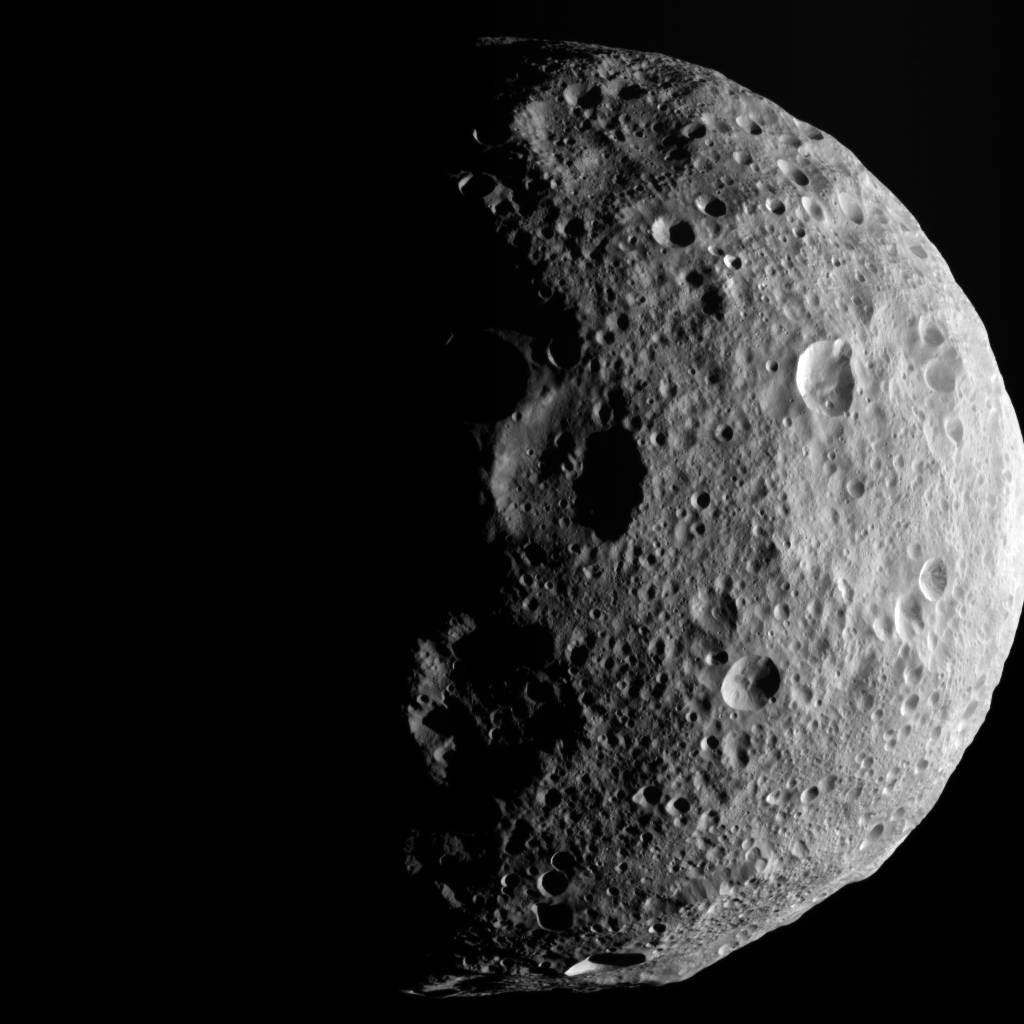
The shadowy outlines of the terrain in Vesta’s northern region are visible in this image from NASA’s Dawn spacecraft. The image comes from the last sequence of images Dawn obtained of the giant asteroid Vesta as it departed the giant asteroid. The view looks down at Vesta’s north pole, which is in the middle of the image. When Dawn arrived in July 2011, Vesta’s north pole was in darkness. After more than a year at Vesta, the sunlight has now made it to Vesta’s north pole.
This image was taken by Dawn’s framing camera on Aug. 25, 2012 PDT (Aug. 26, 2012 CET). Dawn escaped from Vesta’s orbit on Sept. 4, 2012 PDT (Sept. 5, 2012 CET).
The Dawn mission is managed by NASA’s Jet Propulsion Laboratory in Pasadena, Calif., for the agency’s Science Mission Directorate in Washington. Dawn is a project of the directorate’s Discovery Program, managed by NASA’s Marshall Space Flight Center in Huntsville, Ala. UCLA is responsible for overall Dawn mission science. Orbital Sciences Corp. of Dulles, Va., designed and built the Dawn spacecraft. The framing cameras were developed and built under the leadership of the Max Planck Institute for Solar System Research in Katlenburg-Lindau, Germany. The German Aerospace Center (DLR) Institute of Planetary Research in Berlin made significant contributions in coordination with the Institute of Computer and Communication Network Engineering in Braunschweig. The framing camera project is funded by the Max Planck Society, DLR and NASA. JPL is a division of the California Institute of Technology in Pasadena.
Image credit: NASA/JPL-Caltech/UCLA/MPS/DLR/IDA

























